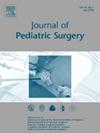Quality of Life, Wellbeing and Participation in Adults Born With Congenital Diaphragmatic Hernia
IF 2.4
2区 医学
Q1 PEDIATRICS
引用次数: 0
Abstract
Background
As more neonates born with congenital diaphragmatic hernia (CDH) survive, interest in long-term morbidities and their health-related quality of life (HRQoL) is growing. For adolescents and young adults with CDH, information on HRQoL is anecdotal. Therefore, our aim was to evaluate HRQoL and its determinants in a recently studied cohort of adult CDH survivors.
Methods
We conducted a prospective, nationwide observational cohort study in CDH patients born 1989 to 2001. Demographic and clinical characteristics were collected, and participants completed questionnaires assessing HRQoL, participation and autonomy, fatigue, and emotional and behavioral wellbeing. Descriptive and inferential statistical analyses were performed.
Results
Sixty-one CDH patients aged 19–31 years were included. Overall, participants experienced normal HRQoL for both physical (mean (SD) z-score: 0.03 (1.01); p = 0.088) and mental (z-score −0.23 (1.05); p = 0.316) components. Their participation and autonomy exceeded that of a reference population with one chronic disorder (p < 0.001), but they experienced significantly more fatigue (z-score: −0.46 (1.24); p = 0.006); which was severe in 16 %. Patients reported significantly more frequent internalizing problems, particularly within the ‘somatic complaints’ domain (p = 0.004). Among positive determinants of physical HRQoL were attendance of regular education, a higher exercise capacity, and better outdoors autonomy. Positive determinants of mental HRQoL included undergoing primary diaphragmatic repair and having fewer internalizing problems.
Conclusions
CDH patients perceive their HRQoL to be comparable to that of the general population, achieving similar participation and autonomy. However, fatigue warrants attention during long-term follow-up, and psychological counseling in childhood and adolescence may be beneficial for addressing emotional problems.
Level of evidence
Not applicable.
先天性膈疝成人的生活质量、健康和参与
随着越来越多的先天性膈疝(CDH)新生儿存活,人们对其长期发病率和健康相关生活质量(HRQoL)的关注日益增加。对于患有CDH的青少年和年轻人,关于HRQoL的信息是轶事。因此,我们的目的是评估最近研究的成年CDH幸存者队列中的HRQoL及其决定因素。方法:我们对1989 - 2001年出生的CDH患者进行了一项前瞻性、全国性的观察队列研究。收集了人口统计学和临床特征,参与者完成了评估HRQoL、参与和自主性、疲劳、情绪和行为健康的问卷调查。进行描述性和推断性统计分析。结果纳入CDH患者61例,年龄19 ~ 31岁。总体而言,参与者在身体(平均(SD) z-score: 0.03 (1.01);P = 0.088)和精神(z-score - 0.23 (1.05);P = 0.316)成分。他们的参与和自主性超过了患有一种慢性疾病的参考人群(p <;0.001),但他们经历了明显更多的疲劳(z-score:−0.46 (1.24);p = 0.006);16%的人病情严重。患者报告的内在问题明显更频繁,特别是在“躯体抱怨”领域(p = 0.004)。身体HRQoL的积极决定因素包括参加正规教育、更高的运动能力和更好的户外自主性。精神HRQoL的积极决定因素包括接受初级膈修复和较少的内化问题。结论scdh患者认为自己的HRQoL与一般人群相当,具有相似的参与性和自主性。然而,在长期随访中,疲劳值得注意,儿童和青少年的心理咨询可能有助于解决情绪问题。证据等级不适用。
本文章由计算机程序翻译,如有差异,请以英文原文为准。
求助全文
约1分钟内获得全文
求助全文
来源期刊
CiteScore
1.10
自引率
12.50%
发文量
569
审稿时长
38 days
期刊介绍:
The journal presents original contributions as well as a complete international abstracts section and other special departments to provide the most current source of information and references in pediatric surgery. The journal is based on the need to improve the surgical care of infants and children, not only through advances in physiology, pathology and surgical techniques, but also by attention to the unique emotional and physical needs of the young patient.

 求助内容:
求助内容: 应助结果提醒方式:
应助结果提醒方式:


